Can You Upload a Film if You Comment Over It
Disclaimer: What y'all're almost to read is a compendium on fair use and copyrights pertaining to film and video production. I provide plenty of links and references to support the information. Simply it should non replace consulting an attorney with regard to your particular situation.
What are copyrights and trademarks?
Just put, a copyright protects literary and creative avails such as books, movies, videos, plays songs, photographs, etc. It should not exist dislocated with a trademark which is a course of protection geared towards words and symbols. Trademarks are predominantly for the protection of a visitor'southward intellectual belongings surrounding its brands and logos.
Unless explicitly expressed, whoever creates an image (photograph or video), owns the copyright to that image. As long every bit that prototype does not infringe on another pre-existing copyright. That is why it is so important for production companies to have contracts in place with both clients and subcontractors with regards to the videos or photographs they create.

What is Fair Apply?
The laws and regulations around off-white use and copyrights are amid the near confusing aspects of filmmaking. When can you employ a vocal, photo, or movie clip, etc., and exist inside the bounds of the law? And what near all those thousands of videos uploaded to YouTube and Vimeo every calendar week? How are they able to become abroad with what appear to be copyrights violations?

Section 107
Co-ordinate to the U.Due south. Copyright Office, Fair Utilize is "a legal doctrine that promotes freedom of expression past permitting the unlicensed use of copyright-protected works in certain circumstances . Section 107 of the Copyright Act provides the statutory framework for determining whether something is a off-white employ and identifies certain types of uses—such as criticism, annotate, news reporting, teaching, scholarship, and enquiry —every bit examples of activities that may qualify equally fair utilize. Department 107 calls for consideration of the post-obit four factors in evaluating a question of fair utilize:
- Purpose and character of the use. Including whether the use is of a commercial nature or is for nonprofit educational purposes
- Nature of the copyrighted work (using parts of something more creative in nature, like a flick or book, has a weaker "fair utilize" argument than news footage or a technical article).
- Corporeality and substantiality of the portion used in relation to the copyrighted work as a whole (i.east. exercise you really need iii whole minutes of "Avengers: Age of Ultron" in that video essay well-nigh superhero movies? Or volition 3 seconds do?)
- Effect of the employ upon the potential market for or value of the copyrighted work (will the use hurt the original copyright holder'due south power to brand money from the work that was copied?).
The affair that makes fair use so hard is that information technology's non a clear-cutting law. It's relatively open to estimation. Unless you're really sued or challenged, you may never know 100% whether your apply adheres to the law or not. In court, it'due south the ruling judge's discretion based on his or her own interpretation of the police.
Transformative Work
These four factors boil down into ii important questions:
First, are you lot repurposing the material for use in a manner other than its original purpose? That is what it means for a work to be transformative. This is a common term you will hear in discussions of fair use. A classic example would be the use of a movie prune within an educational context. A clip from Saving Individual Ryan's opening scene in a video essay on how Spielberg uses movie theatre verité is transformative. You're taking the original media (a piece of entertainment) and using it for education.
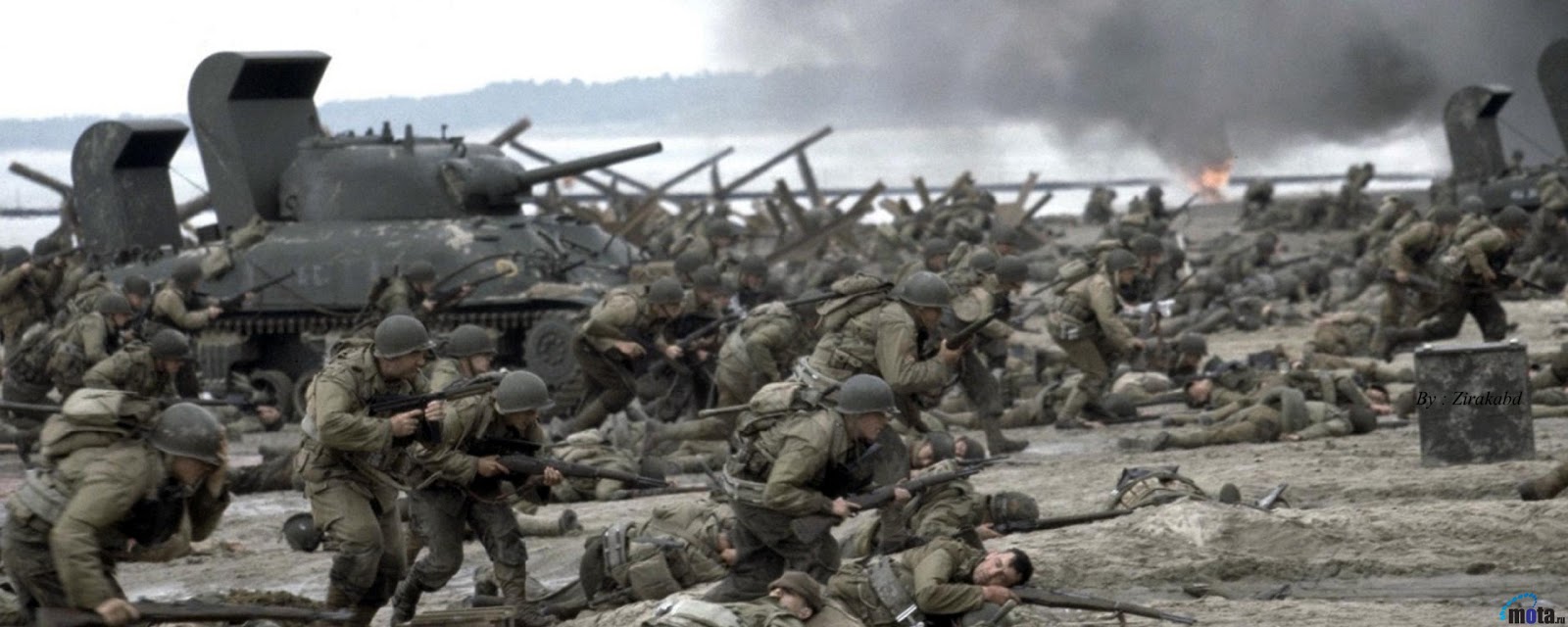
Is it fair?
All the same, if you took those same clips and dropped them into your WWII short flick for the express purpose of being a boxing scene, well, in the words of Andrew Garfield to Jesse Eisenberg's inThe Social Network, "Lawyer up!"
The second question to ask is, "If your use is transformative, are you using the appropriate amount for that transformative purpose?" Normally, this amount is a modest pct of the whole. In the to a higher place example of using clips from Saving Private Ryan, you lot could probably justify as much as 30 seconds to adequately bear witness use of cinema verité. However, if you uploaded the unabridged movie to your "education aqueduct," and you only had a few random voice-over commentaries most color grading or cinematography, that would exist a harder off-white use argument to support.
The fab 4
F our uses of copyrighted cloth are particularly addressed and often protected by off-white use: commentary, criticism, teaching, and news. So satires, parodies, video essays, documentaries, etc., will usually be protected by fair use. Notwithstanding, your interpretation of "educational activity" my not be the same as a judge's. Lots of videos are uploaded to YouTube with a disclaimer like "This video is uploaded for educational purposes."
But it's just the total video with no transformative aspect. (Sorry buddy, that doesn't cut it.)
Think, off-white employ is the kind of law wherein a transgression isn't definitively adamant until after the fact (i.e. you become sued). It's not like running a red light or shooting a person in cold blood. These are acts that you know are illegal beforehand. So invoking "fair use," leaves you lot open to litigation if at that place are no expressed licenses in identify. That'due south just a common cold hard truth.
With that said, you don't have to be gun-shy nigh it. In that location are resources and past precedents in identify wherein you tin feel confident in your application of fair apply. We'll go to those later on.
The DMCA
No discussion of copyrights and off-white use in filmmaking would be complete without addressing to some extent the Digital Millennium Copyright Act (DMCA). This was a law signed by President Beak Clinton on October 12, 1998 that implements two treaties by the World Intellectual Holding Organization (WIPO). The law is detailed and contains 5 titles. In brusque, and paraphrasing Wikipedia speak, "Information technology criminalizes product and dissemination of engineering science, devices, or services intended to circumvent digital rights direction (DRM)."
These are the technologies used to access copyrighted digital media such as computer programs, movies, etc. A key aspect is this. DMCA is the limitation of liability for internet companies with regards to copyrighted works distributed on the internet. In other words, sites like YouTube and Vimeo aren't liable for violations by people who use their services. Every bit long as they respond immediately to copyright holders' requests for action against violators. We'll address this later as well.
Documentary Filmmakers' Statement of Best Practices
I've studied and written about the topic of fair use a number of times in the past. A year agone I had the opportunity to interview Patricia ("Pat") Aufderheide, 1 of the co-founders for the Center for Media and Social Impact. This is a non-profit organization, based in Washington D.C. Information technology fights for universal copyright and off-white apply standards for films, videos, photographs, and fifty-fifty podcasts and radio.
My interview was part two of a two-part podcast series on Fair Utilize in Filmmaking. (You tin can hear my full interview with her here). CMSI has worked with legal scholars and media professionals to create a serial of PDFs. These aim to standardize fair usage and provide a centralized resource for media makers. One of the documents is The Documentary Filmmakers' Statement of All-time Practices in Off-white Use. Pat specifically worked with one of the world's most renowned experts on fair use, Peter Jaszi, to put this certificate together.
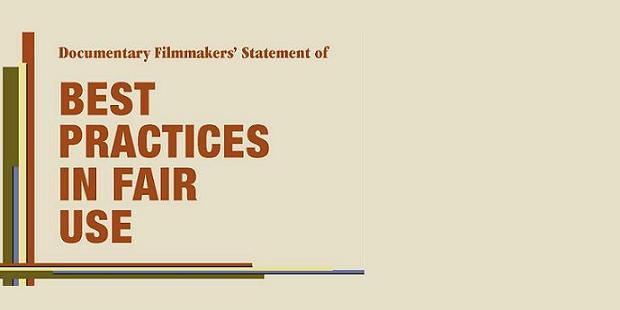
Driving force
The primary impetus for Pat and Peter creating this document (and leading the research to create it) was their discovery of the number of documentary filmmakers who were fugitive the usage of cloth they believed would put them at risk. Some recurring refrains from documentary filmmakers included: don't cover any topics related to popular music; don't encompass whatever politics that would crave y'all to use news footage; don't encompass anything related to popular culture; etc.
All of these topics would require huge clearance budgets, some even greater than the budgets of the unabridged films themselves. As Pat puts information technology, "Filmmakers aren't waiting for people to censor them. They're just going ahead and doing it to themselves."
Based on these findings, Pat and Peter got funding from the Rockefeller and MacArthur Foundations. This was used to fund the extended research and creation of the argument of best practices.
The beauty of the statement of best practices is that information technology was created in conjunction with working feature film documentary filmmakers and the world's leading legal scholars, to define, in unproblematic words, what kinds of uses of copyright works autumn under off-white use. I used and referenced it in the making of my short film documentary "Mixed in America: Little Mixed Sunshine."
I even had Pat watch the brusque to become her take on it. The prologue, in particular, contains a number of clips from music videos, old movies, and contemporary movies. Alongside the credits for the clips used, I also reference the Fair Utilize statement. And then technically, could Disney or HBO come after me? Yes. But I followed the guidelines and went the extra mile to credit the clips used. So, I'm non losing any sleep over the "Mouse House" giving me a call.
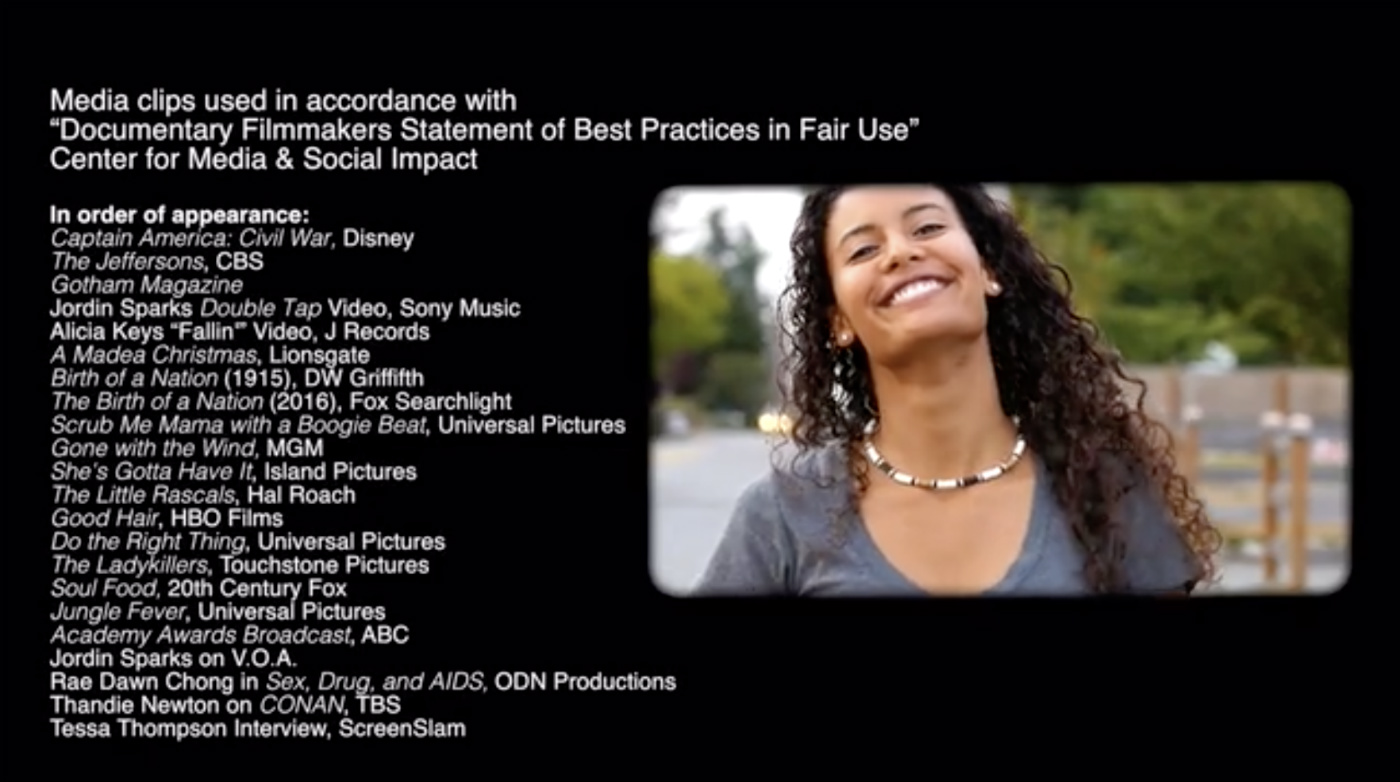
The Big Five Filmmaking Scenarios
Now I want to address the pinnacle 5 areas where filmmakers run into problem when using other people'due south copyrights. This is based on my discussion with Pat and additional research. I'll be using a combination of example studies where copyright violators went afoul of the corresponding copyright holders. And cases where the fair employ appears to be categorically intact.
We're also planning to produce some more articles on the business organisation side of filmmaking.
Trademarks and logos
Yous know how some reality Tv shows blur out the logos on apparel? I used to retrieve that was considering the reality evidence didn't want to give free advertising to the brand. But that is not the instance. It turns out that it's because of copyrights.
The first office of my aforementioned podcast 2-part interview was with New York documentary filmmaker Salima Koroma. I was interviewing her for something completely different, and I asked her how her forenoon was going. (You know, regular pre-interview chit chat.) She said it was hectic because she was coming together with her lawyers to become over all the clearances she had to go back and become for her documentary "Bad Rap." Clearances she had no idea were needed. This pre-interview "small talk" led into a fifteen+ minute conversation that became its own separate episode.
For case, there'south a shot of Times Square in her moving picture. In the background are all of these logos, musical posters, billboards, etc. According to Salima'southward attorneys, they ALL needed clearances.

This seemed crazy to me. If anything seemed to fit under fair use, a 2-second shot of "The Lion King" billboard in the background of a documentary seemed it. Non only was it brief, but information technology was also incidental. These types of occurrence helped to inspire the work behind the CMSI-created document of best practices. Salima's attorney's response was that it's meliorate to be safe than distressing and get the clearances. Even if something technically fits under "off-white use."
Images
In 2011 I participated in The 48 Hour Film Project. To this day it remains the nigh challenging and one of the well-nigh rewarding filmmaking experiences of my life. One of the rules of the festival was making certain y'all had clearances for whatever copyrighted material in your pic. Including paintings and photographs.
"Just Ron, didn't you allude to the fact that incidental appearances of copyrights or trademarks might be okay?" That is truthful. But ane) these weren't documentaries we're making, they were narrative pieces of fiction. And 2) the 48HFP distributes the winning films online and internationally. Then they're covering themselves. And in case y'all're wondering, no, my motion-picture show didn't win. We missed the deadline by xxx minutes considering needed to re-export the project.
Stock photos and footage
Only it's simply not the apply of photographs or paintings every bit incidental appearances you demand to exist mindful of. If you're using them in the video (i.e. you're dropping the image on your NLE timeline), you need to brand certain y'all have clearances. At that place are many resources for legally licensing stock photos and footage (due east.k. Pond5, Getty Images, Video Blocks, and Shutterstock, to name a few).
At that place are besides plenty of resources to obtain gratuitous stock imagery. Sites like Unsplash and StockSnap have utilized Creative Commons Zilch licenses. This is the most permissive of the creative commons licenses (see beneath for the full description of Artistic Commons). It's substantially but ane "notch" beneath the public domain. A CC0 license allows you to use the copyrighted piece of work whatsoever mode you desire. Without the need to even credit the copyright holder. I've frequently used Pixabay to detect free stock video footage. (Proceed in mind, you get what you pay for.)
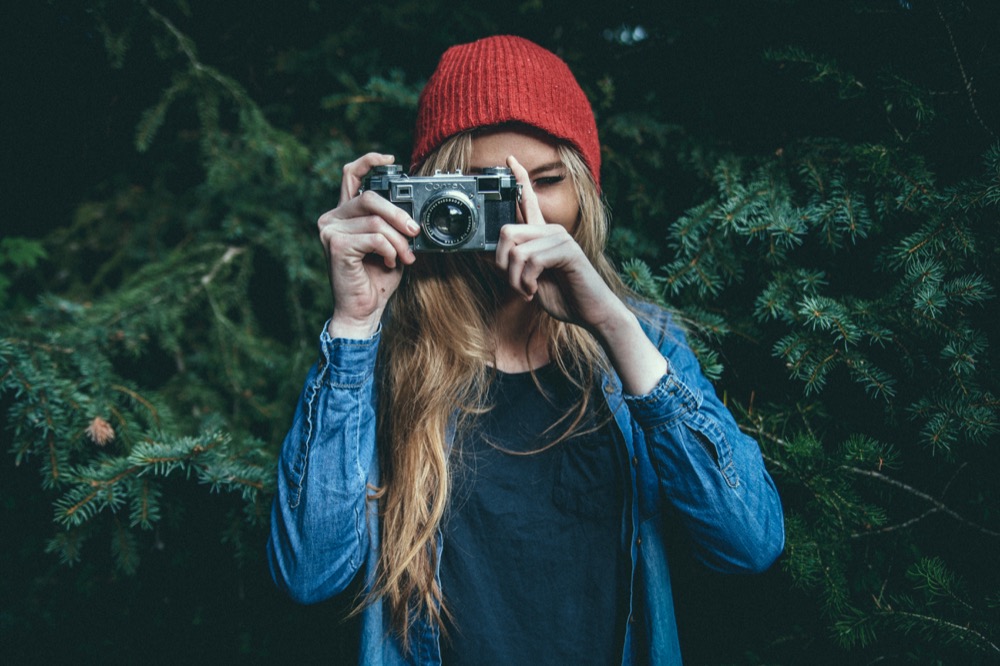
Movie and television clips
Every bit I mentioned higher up, I used clips from diverse movies and Television set shows for my short film documentary. Perhaps the most common surface area where you lot might see this case of off-white utilise is in video essays. Essayists similar Tony Zhou ("Every Frame a Painting") and Evan Puschak ("Nerdwriter") garner millions of views from their corresponding video essays. And they all include movie clips, photographs, television clips, and in some cases, even music.
Yet, YouTube has not invoked DMCA rules to take their videos downwards. And, on elevation of that, these guys are making thousands of dollars per video (as of this writing, Tony's Patreon entrada for "Every Frame a Painting" yields over $vii,700 per video).
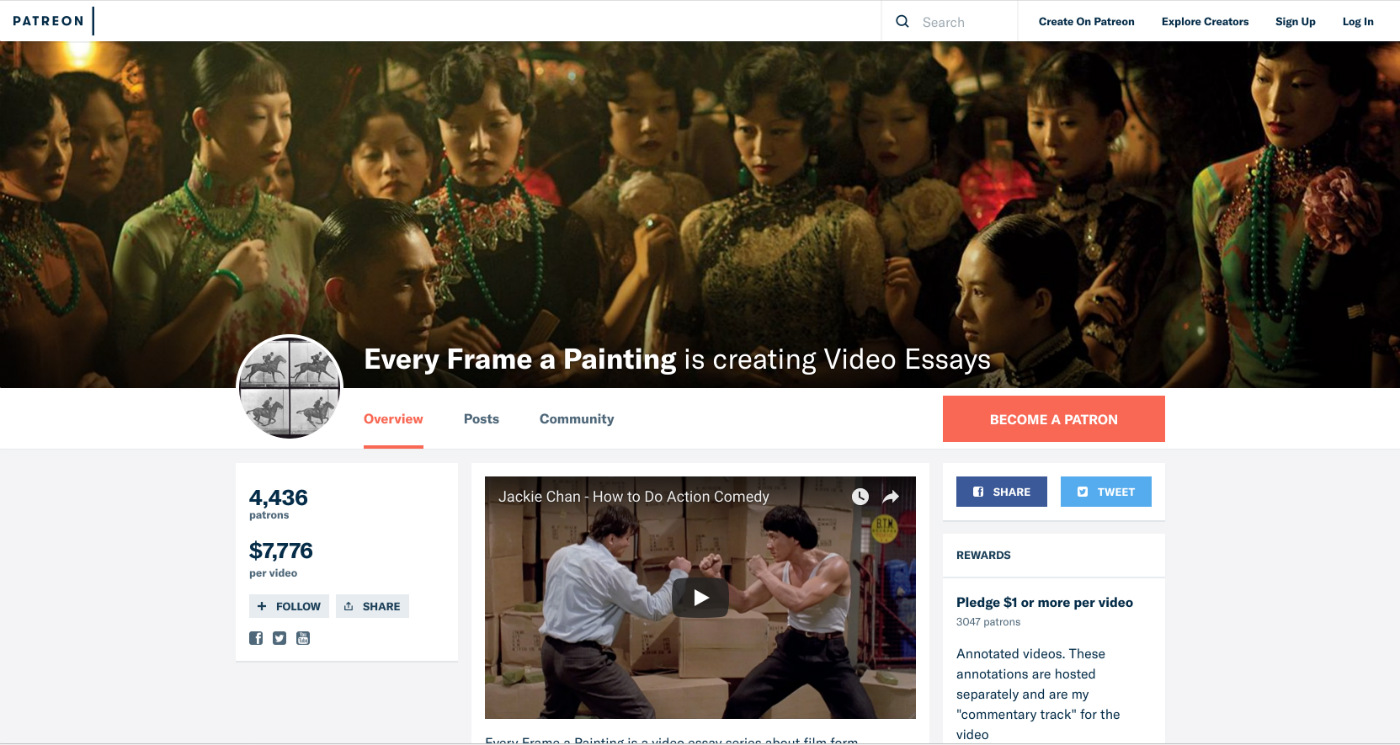
I of the tests for fair use adherence is whether the copyrighted material is used for commercial gain. Information technology's clear hither that these guys have a commercial do good from their apply. Evan not but makes a few one thousand dollars per video from his Patreon, but he also gets corporate sponsorship from companies similar Squarespace.
In essence
But video essays are the quintessential instance of fair use in terms of both education and critical commentary. That is the essence of a video essay. Based on the transformative use, the amount of the copyrighted material used, and the fact that this utilize is not hurting the commercial viability of the copyright holders, they're protected.
Now, I cannot say for 100% certain those guys don't actually have licenses with all parties whose copyrighted works are being used. Just, I'm going to go out on a limb and say that a guy from Philly making videos in his living room and earning $iii,000 per video has not paid licensing fees to a dozen or then different conglomerates.
I accept some other perfect example of this usage where I do know for sure the filmmaker did not have license or permission.
Kirby Ferguson is the filmmaker behind "Everything's a Remix."
This short movie serial has garnered millions of views and Kirby has even spoken on the TED stage. Back in 2010 I interviewed him for one of my older podcasts, and I subsequently contacted him nearly his use of Tarantino movie clips, besides as music usage (where he used parts of famous songs to illustrate, coincidentally, how musicians sample songs). Kirby told me he did not get permission from the studios or labels to use those clips.
You know what he did exercise? He followed the guidelines of the CMSI's The Documentary Filmmakers' Statement of Best Practices in Fair Utilize. In fact, he was the first person to ever refer me to the work of Pat and the CMSI.
Intellectual Property
Intellectual Property (or "IP") is a physically intangible item of value based on ideas, computer code, trademarks, copyrighted stories and characters, etc. For many companies, their IP is their primary product. So, it stands to reason, they go out of their mode to protect that IP.
But filmmakers are nerds. (Y'all're reading an article by a huge i. A nerd that is). And nosotros honey our sci-fi and fantasy. Hence the fan film.
Fan service
YouTube contains tens of thousands of fan films. Media created by fans of a piece of IP wherein they use that IP to make their own films. (Some have jokingly argued that this flavor of "Game of Thrones" is a glorified "fan film" vs. an adaptation considering George R.R. Martin hasn't finished the concluding two books in his famous Song of Ice and Fire series upon which the HBO series is based. But, once more, don't get me started.)
Based on my understanding of fair apply and copyright constabulary, just about every single instance of a fan movie is a copyright violation. They are non necessarily making money from these films; simply for the most part, the films are non making any kind of commentary or critique on the IP. They are not transformative in purpose either (i.e. educational activity). They are entertainment for entertainment'south sake, just like the original IP.
Now, some IP holders encourage fan films and let a vibrant fan moving picture community to flourish. Fan films proceed the civilization alive and fans excited near the traditional IP. Lucasfilm is a perfect example of that in how they've responded to and embraced the "Star Wars" fan motion picture community. (I of the well-nigh celebrated "Star Wars" fan films recently was last year's "Darth Maul – Apprentice" with over 14 million views as of this writing.)
Even so, some IP holders of sci-fi space stories are non as forgiving.
The Battle of Axanar
Before this year, after a legal battle that lasted almost a year, Paramount Pictures and CBS (the owners of "Star Trek") won a judgment against Axanar Productions. Axanar had raised over $1 1000000 in crowdfunding to produce a characteristic-length version of it'due south pop brusque moving picture "Prelude to Axanar." Axanar claimed fair employ. A U.S. district court estimate said no.

Axanar and CBS/Paramount eventually reached a settlement whereby Axanar agreed to substantially change the length and content of their motion picture (which naturally put them in a bit of a bind as they raised over a one thousand thousand dollars to brand a characteristic).
What fabricated this instance particularly stand out was the fact that there have been "Star Trek" fan films literally for decades. Dating back as early every bit the 80s. Even Axanar's original film "Prelude to Axanar" was made with no objection from CBS/Paramount and as of this writing has over 3 million views.
Don't go them started
What ready the studio off, in this case, was the scope of this new project. In add-on to the feature-length and the $1 1000000+ budget, it stars well-known actors like Richard Hatch (Apollo from the original "Battlestar Galactica" and Tom Sarek in the SyFy Aqueduct remake), Gary Graham, and Kate Vernon (likewise from SyFy'southward "BSG"). In the eyes of CBS/Paramount, the feature-length fan film with those production values and cast, was too much. (especially with the new "Star Expedition: Discovery" series on the horizon).
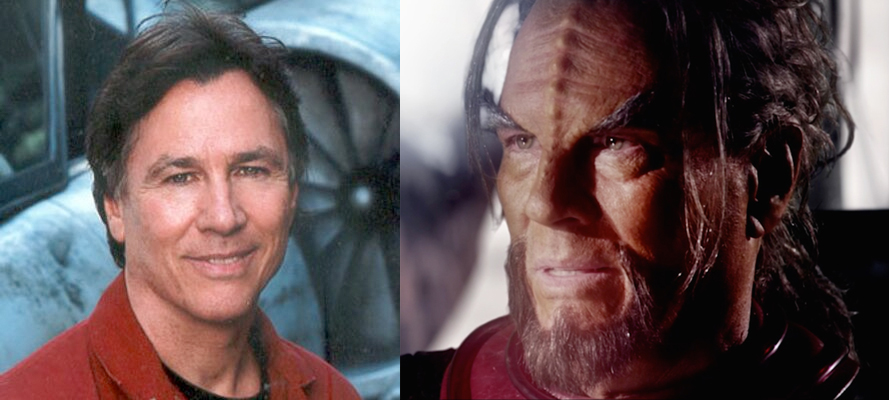
Richard Hatch (who sadly passed away this by February) played a Klingon commander in the Axanar series.
The uproar from the fans was huge. Needless to say, they were pissed. The fan community is what kept "Star Trek" live, going equally far back as the 70s. So many saw this lawsuit as an affront on the fan loyalty and devotion to the franchise.
In an endeavor to support the fan motion picture community and encourage the continued production of fam films, CBS/Paramount created a set of guidelines for future fan motion picture productions. They put limits on things like the corporeality of money raised (must exist less than $50,000), the running time (less than xv minutes), and that films must star and be produced by amateurs. Many experience that those guidelines are too limiting. Only time will tell how it all plays out.
The Wrath of Kahn
Joseph Kahn is one of the nearly prolific music video filmmakers on the planet. He is the become-to guy for Taylor Swift. He'southward insanely talented and has the attitude to friction match.
About 2.5 years ago, he and producer Adi Shankar released what some have described every bit the most epic Ability Rangers moving picture e'er made. Based on the popular children's series endemic past Saban Entertainment, Kahn and Shankar's version is nighttime, gritty, and absolutely NOT FOR KIDS. This is due to sex, graphic violence, drug use, linguistic communication, dark themes—pretty much everything you can put in a moving-picture show that makes it NSFW.
Recognizable talent
The product values are top-notch, from the CGI to the choreography; and even the acting is very good. Information technology besides stars well-known actors, namely Katee Sackhoff (yet another SyFy BSG alum), and "Dawson" from the WB hit "Dawson'south Creek", James Van Der Beek.
A quick response
It did non accept long for the curt to go viral. Saban, who at the time was in pre-production for a new Power Rangers film (released terminal year), ordered to have the video removed from Vimeo. Kahn was pissed.
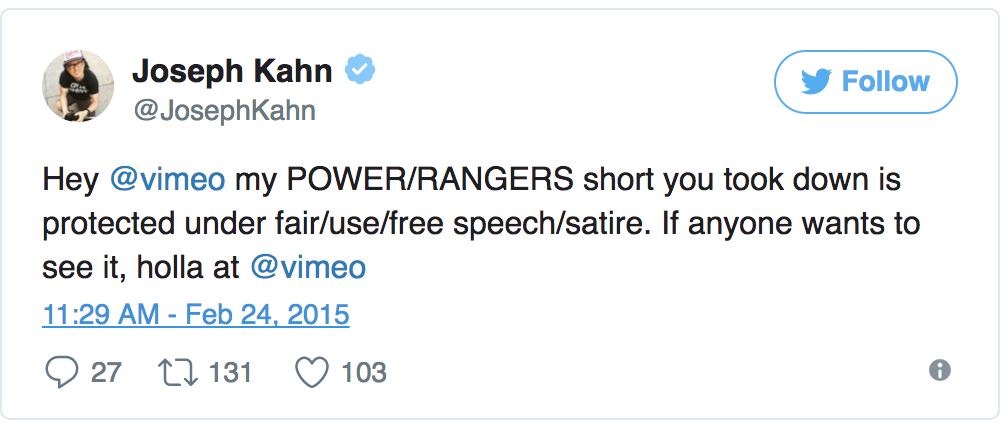
Retrieve the DMCA I mentioned in a higher place? This is where information technology came into activity. Nether the regulations of the DMCA, Vimeo was required by law to remove it at the bidding of Saban. And they retorted as such to Kahn on Twitter.
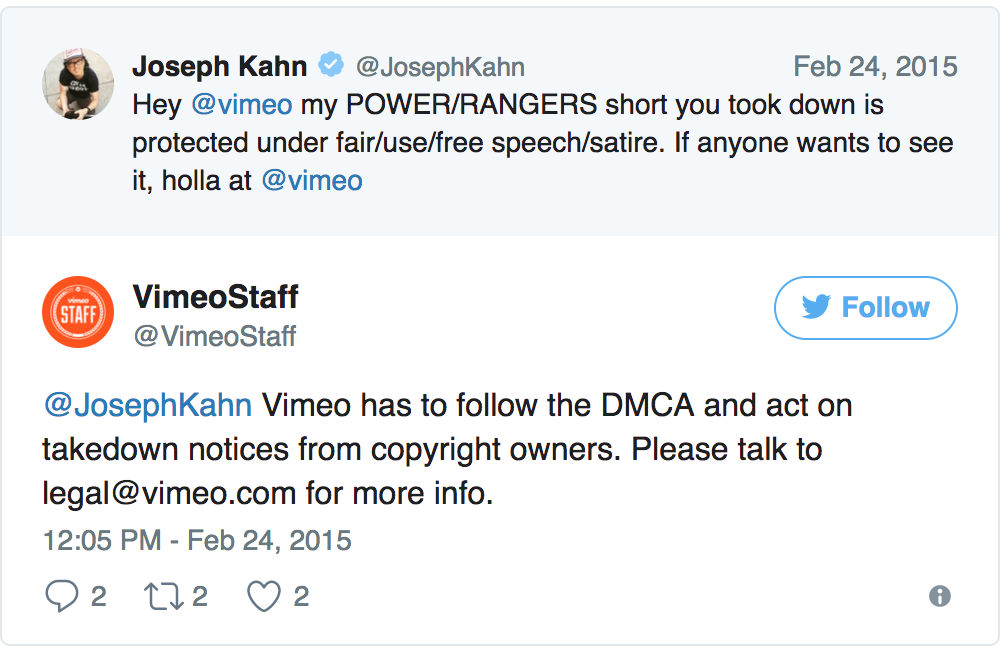
They released a formal argument on their blog where they said:
"The video creator feels that the video is covered by Fair Apply based on the fact that it is non-commercial and satirical. We agree that an statement for fair use can exist fabricated, but the DMCA law does non give content hosts (like Vimeo) permission to disregard a takedown observe just because of the presence of one or more than fair apply factors. This is a legal matter between the copyright holder and the video creator."
Making a case
Kahn and Shankar were making the case that this video falls under Fair Utilise considering they were not making whatsoever money from it, and they saw it as a satirical commentary on kids and violence. IMHO, I called B.S. on both, and I call up Saban had a stiff instance confronting Kahn regarding this picture.
- Kahn may not take been paid for the motion-picture show, but y'all don't have to be a Harvard business organization graduate to know that a movie like this, and the publicity information technology was getting, will exist worth more to him long-term than any director fee he would've earned. Filmmakers brand these kinds of films all the fourth dimension precisely for the marketing value they bring. All an chaser has to practise is add upward the press impressions Kahn had gotten on sites like Mashable, i09, HitFlix, and pretty much every major tech, sci-fi and picture show website and calculate what ads on those sites would cost to come upwards with a effigy.
- It's obviously non an educational or "news" item.
- Lastly, I don't remember this kind of film really qualifies as a "commentary" on Ability Rangers, or even a parody. It is a serious drama using the characters from the universe. In Kahn'due south ain words, he fabricated information technology because he wanted to meet a "expert" Ability Rangers film; not as a critique or commentary. Shankar released a video which gives his reasons why he made it. But the comedic nature of this video clearly shows there was no sincere want to brand a serious commentary about children and violence. At the end of the day, they wanted to make a boot-ass Power Rangers film. And without a doubt, they did.
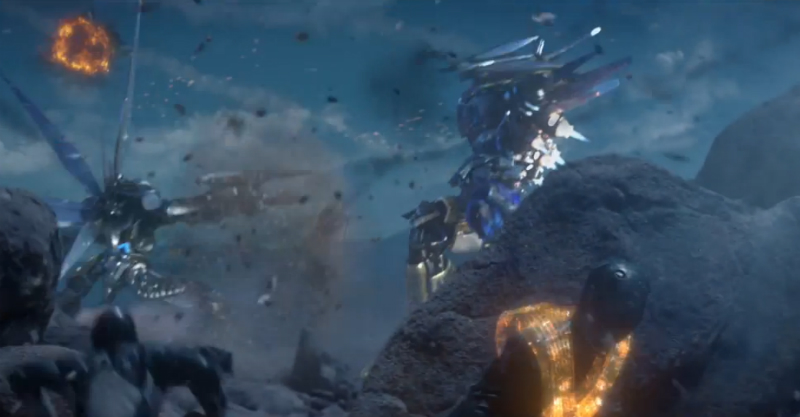
Dissever decision
I loved that Ability Rangers "fan moving picture." It was truly a marvel. But it really wasn't off-white employ. As fan fiction, few reach the level of sophistication of the Kahn film. But if that fiction goes against the brand of the art in question, the copyright holder should have the correct to have information technology removed, no matter how annoying or frustrating it might be even to the very fans for which information technology was made. IMHO, nosotros equally artists should really be defending that right, not fighting against it (as many people did when Vimeo first took it down).
Ultimately Saban and Shankar/Kahn reached an agreement to reinstate the film if a disclaimer was added. I actually think that's was pretty generous on the side of Saban. (And based on the dismal performance of their official Power Rangers picture, they may want to look into Kahn doing a feature-length version of his fan film. I that is more kid-friendly, of form).
Music
The last of the big five areas of fair utilize scenarios for filmmakers I want to cover is music. Oh boy. This will be fun.
No area of confusion on this event is peradventure more misunderstood than music. Yous demand expect no further than the hundreds (if not thousands) of professionally shot wedding videos edited with copyrighted music. Or the countless ballsy curt films on YouTube with Hans Zimmer or Michael Giacchino "scores." Many novice filmmakers assume that if a video is "non for commercial purposes" and/or if the music was purchased on iTunes, then that clears them or their conscience. Unfortunately, it doesn't (well, it may clear their conscience, merely it definitely doesn't clear them legally).
Within parameters
Music does indeed fall under fair utilize, and then your use of information technology must also fit within the parameters mentioned above. The problem is, near of the utilize of music in such film and video is a copyright violation. They use someone else'south music, unlicensed, in the mode for which it was originally purposed. There is no transformative utilize or commentary on the music itself.

In order to legally use music in your film or video, you demand two types of licenses: a master (also known as mechanical) use license (controlled by the record label) and a synchronization (or sync) license (controlled by the publisher). The mechanical use license gives you rights to the vocal from the originator; the sync license gives you the correct to the specific version of the song and set information technology to a picture show or video. In many cases, the same company represents the publisher and the label. Simply if they don't, you lot'd have to arrange for licenses with each entity separately.
Years agone, The Harry Play tricks Agency was a centralized resource for getting all the appropriate licenses for utilise in films. They have since given up managing sync licenses and focus on mechanical use licenses.
Raising the stakes
Within the past vii years, tape companies accept raised the stakes when it comes to illegally using their music. Ii wedding videographers I know personally had rather high-profile public lawsuits by EMI when nuptials videos they produced for celebrities went viral. As most wedding videos practice, theirs had copyrighted music. Each settled out of court for amounts in the 5-effigy range; that'south A LOT of coin for a pocket-sized wedding filmmaker to trounce out. If you lot are a wedding and event videographer, don't gamble it. Fortunately, there are alternatives to using music illegally.
Music License Alternatives
Unless you accept a huge budget, you will not be able to go popular music for that really cool brusque moving-picture show or characteristic pic. Thankfully, in that location is a growing number of sites where you can legally license music from a wide variety genres. Some of these sites even take mainstream pop music.
The length and toll of the license will depend on factors such as the intended audition (wedding, corporate, personal), the size of the audience, and the intended distribution (theatrical, online, DVD/Blu-ray, broadcast). For theatrically-released features, you lot will typically need to conform some sort of custom license (which undoubtedly will cost y'all an arm and a leg).
Royalty-free? Or rights-managed?
The most important thing to keep in listen is that some of these sites have royalty-gratis licenses, and others have what'southward called "rights-managed" licenses.
- Royalty-gratuitous is essentially "buy once, use indefinitely." You can use royalty-free songs in merely about all manners of production, for as many productions, for as long as y'all similar. A few of the virtually pop royalty gratuitous sites I'm familiar with include Pond5, PremiumBeat, and AudioJungle. You'll detect that the rates on these sites can exist every bit little as $12 to $40.
- Rights Managed licenses are more than restrictive. They are typically for i song and one production. Whereas royalty-free sites take one price per vocal, rights-managed sites will modify the toll based on the license. The same vocal my cost $60 for utilize in a wedding video, only $500 if used in a local cable TV commercial, or a corporate promo video for a company with l or more than employees. The rights managed sites I encounter more than ofttimes are Marmoset Music, Song Freedom (now FyrFly), MusicBed, and Triple Scoop Music.
As an avid podcaster who pretty much does information technology as a passion projection, I don't have the budget to license music for the episodes I produce. So I've turned to a resources that is non only slap-up for music just applicable to all forms of copyrights: creative commons.
Creative Commons
Creative Commons is an organization dedicated to providing worldwide licensing for copyright holders who want the power to freely and easily license their work to others. When you use a copyrighted work under Creative Eatables, you concord to one of six types of licenses.
Creative Commons licenses
- Attribution (CC BY): This license lets others distribute, remix, tweak, and build upon the copyright holder's piece of work, even commercially, as long equally they requite credit for the original creation.
- Attribution-ShareAlike (CC By-SA): This license lets others remix, tweak, and build upon the copyright holder's work, even for commercial purposes, as long as they give credit and license their new creations under the identical terms. All new works will comport the aforementioned license, so any derivatives will also let commercial use. This is the license used past Wikipedia and is recommended for materials that would benefit from incorporating content from Wikipedia and similarly licensed projects.
- Attribution-NoDerivs (CC Past-ND): This license allows for redistribution, commercial and non-commercial, as long equally information technology is passed along unchanged and in whole, with credit to the copyright holder.
- Attribution-NonCommercial (CC Past-NC): This license lets others remix, tweak, and build upon the copyright holder's work non-commercially, and although their new works must too admit the copyright holder and be non-commercial, they don't have to license their derivative works on the same terms.
- Attribution-NonCommercial-ShareAlike (CC BY-NC-SA): This license lets others remix, tweak, and build upon the copyright holder's work non-commercially, as long as they give credit and license their new creations under the identical terms.
- Attribution-NonCommercial-NoDerivs (CC Past-NC-ND): This license is the most restrictive, only allowing others to download the copyright holder'due south works and share them with others as long as they give credit. They can't change them in any way or utilize them commercially.
As I mentioned earlier, I utilize CC music in my podcasts, but I besides used it in my documentary short.
Artistic Commons does extremely of import work. It allows content creators to share and use copyrighted material in a way that is fair and equitable to both the copyright holders and the users of those copyrights. Y'all can learn more about them at CreativeCommons.org.
C.Y.A.
As a filmmaker (documentary or otherwise) who wants to use other people'due south copyrights in your work, there are a number of things you tin exercise to protect yourself:
- Use the Statement of All-time Practices: When CMSI did a report two years agone of documentary films over the previous ten years that had implemented the guidelines of fair use outlined in this document, they constitute the overwhelming majority of them had no issues with broadcasters, insurers, or lawyers.
- Where budgets let, go alee and get the clearance. You may recall my recent interview with the editors of HBO's documentary serial "The Defiant Ones", about the careers of Dr. Dre and Jimmy Iovine. The music licensing budget for that four-role series was the highest in HBO's history.
- CC Yourself: when looking for music, photos, or fifty-fifty stock footage for your video needs, if you don't accept the budget, outset with Creative Eatables sites. You can even start your search direct from the CC Search Engine.
I've tried to give you an exhaustive list of resources and case studies related to fair employ and copyright usage so that moving forward, you can make informed decisions. But I'1000 sure in that location are other resources I may have missed. What are some of your favorite sites for finding and using copyrighted material legally in productions? Please share.
[Header prototype Photo past Claire Anderson on Unsplash]
Source: https://blog.frame.io/2017/08/30/copyrights-and-fair-use-for-filmmakers/
0 Response to "Can You Upload a Film if You Comment Over It"
Post a Comment